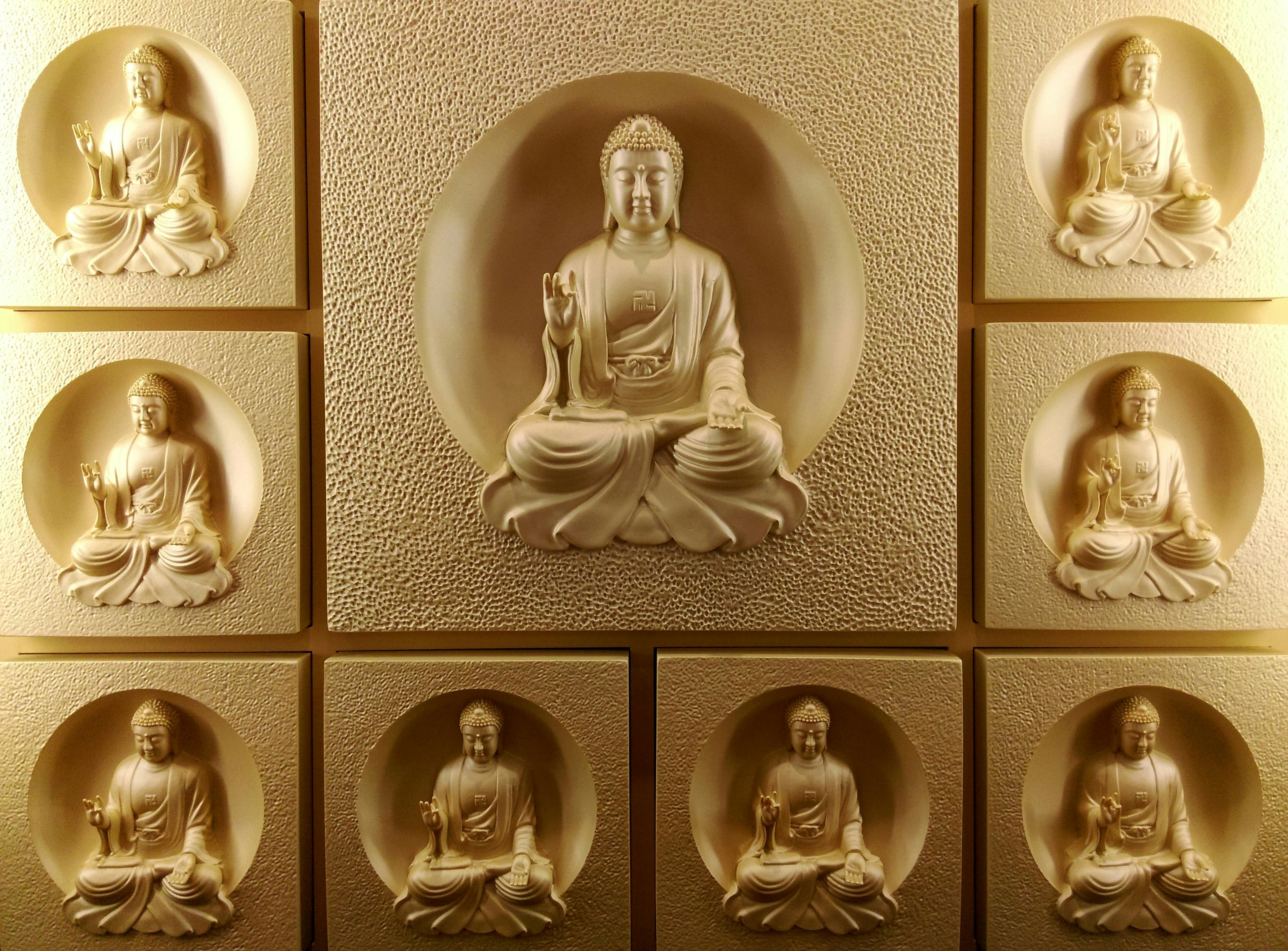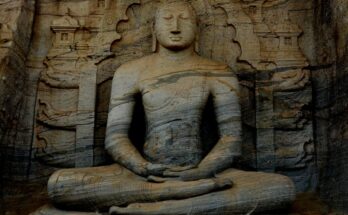Buddhism: religion or philosophy?
Buddhism has more than 507 million adherents worldwide, making it the fourth most prevalent religion in the world. Like many of the world’s other great religions, travelling through India, China, and other traditionally Buddhist nations reveals elaborate temples, Buddha shrines, and devoted followers.
But, especially among Westerners, Buddhism is also sometimes referred to as a philosophy. Its teachings are similar to those of other popular systems of thought, such stoicism. Buddha himself also stressed the usefulness of his teachings, preferring philosophical inquiry over religious dogma.
How to label Buddhism?
Image via Unsplash.com
The first Buddhists arrived in India in the sixth century BC. Unlike theistic religions like Christianity, it is a non-theistic religion, meaning that it rejects the existence of a creator God. Siddhartha Gautama, often known as the Buddha, was a Hindu prince by mythology when he created Buddhism. But in the end, Siddhartha made the decision to give up his fortune and turn into a sage.
He made this choice after learning about human suffering and the anguish it causes. As a result, Siddhartha lived a solitary life. The term “struggle-laden cycle of life, death, and rebirth, without beginning or end” (samsara) refers to this state of affairs. He dedicated his life to creating a belief system that would enable people to learn how to break free from it.
Buddhism took a while to get traction, despite its current popularity. India was going through a major period of religious reform in the sixth and fifth centuries BC. Buddhism emerged as a reaction to the perceived inadequacy of Hinduism in meeting the requirements of common people. However, the faith did not become popular until the third century BC. Buddhism was brought to the Indian subcontinent and Southeast Asia by the Indian Emperor Ashoka the Great. As a result, it flourished quickly throughout these regions.
Philosophy of Buddhism
Some of Buddhism’s philosophical facets are already starting to show. The Four Noble Truths mentioned above bear a striking resemblance to standard logical thinking, which involves premises and their relationships.
However, the Buddha himself provides some of the most tangible philosophical teachings in this religion. Buddha invites people to learn more about his teachings rather than pleading with them to be followed strictly. The six unique features of Buddhist teachings, or Dharma (Sanskrit: “truth about reality”), include Ehipassiko. Buddha frequently uses this term, which literally translates to “come and see for yourselves”!
He urged everyone to apply critical thinking skills and use their own experiences as a litmus test for his ideas. This kind of thinking is very dissimilar from those of religions like Islam and Christianity, whose adherents are typically urged to study, comprehend, and embrace the Bible without inquiry.
It’s also critical to recognize that a particular philosophical school has rejected the teachings of the Buddha. In the centuries that followed his passing, when individuals started to record his teachings, conflicting interpretations emerged among various philosophical schools. Initially, those arguing against Buddhist teachings used conventional philosophical instruments and strategies to support their positions.
Religious aspect of Buddhism
Image via Unsplash.com
Of course, this religion has a lot of religious components as well! For example, Buddha’s belief in reincarnation has already been demonstrated. He explains how a person’s death causes them to reincarnate as someone else. What a person becomes in their next life is determined by their past deeds and behavior (karma). Buddhists must accumulate good karma and adhere to the teachings of the Buddha if they hope to be reborn into the human realm, which the Buddha considers to be the ideal place to reach enlightenment. Buddha thus offers a strong incentive to heed his advice in addition to encouraging critical inquiry.
A lot of world faiths also promise their adherents an ultimate reward that they should strive for throughout their life. For Christians, this means going to Heaven when they pass away. This is a state of enlightenment known to Buddhists as nirvana. But nirvana is a free state of mind, not a location. A person who has reached nirvana is said to have discovered life’s ultimate meaning. When someone reaches this level, they have permanently broken free from the cycle of pain and reincarnation since all of the reasons have been removed from their enlightened consciousness.
Ritual and ceremonies
In addition, a large number of Buddhist rites and rituals are an essential component of devotion for a large number of people worldwide. During a puja, devotees usually present offerings to the Buddha. They do this action as a way to thank the Buddha for his teachings. Followers are also free to worship, chant, meditate, and repeat mantras during puja.
The purpose of this devotional activity is to strengthen followers’ religious commitment and help them become more receptive to the teachings of the Buddha. Buddhists can pray and meditate in temples or in the comfort of their own homes, in contrast to certain religions where rituals must be performed under the guidance of a religious leader.
Answering the question

Image via Pexels.com
As we can see, Buddhism has a lot of traits that make it difficult to distinguish between philosophy and religion. However, compared to other regions of the world, Western civilizations tend to give rise to the notion that we must clearly categorize it as either one or the other.
Philosophy and religion are two quite different concepts in the West. Many Western philosophers (and philosophers themselves) would not have thought of themselves as deeply religious people. If they did, then their modern adherents have been effective in separating a certain school of thought’s philosophical from its religious components.
For understandable reasons, a large number of people who identify as atheists or agnostics prefer to overlook Buddhism’s religious components. Ultimately, the teachings of Buddhism mesh well with the mindfulness, meditation, and yoga movements that have become increasingly prominent in Western nations in the past few decades. Occasionally, these teachings are taken without giving due credit to their original sources. An example of this would be someone posting lines from Buddha on social media or claiming to be interested in Buddhism but having not read any of the major books.
USEFUL LINKS:
Click here to read more
Know the Civil Islamic Practices here






